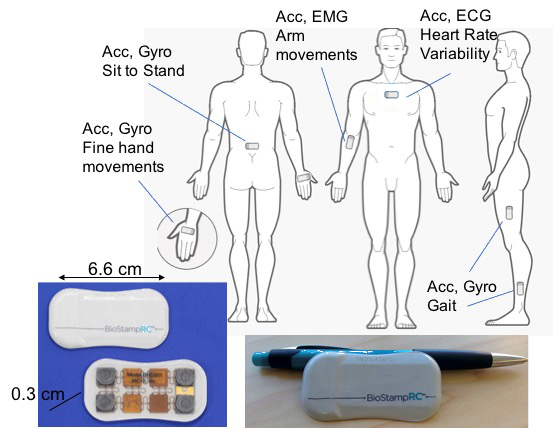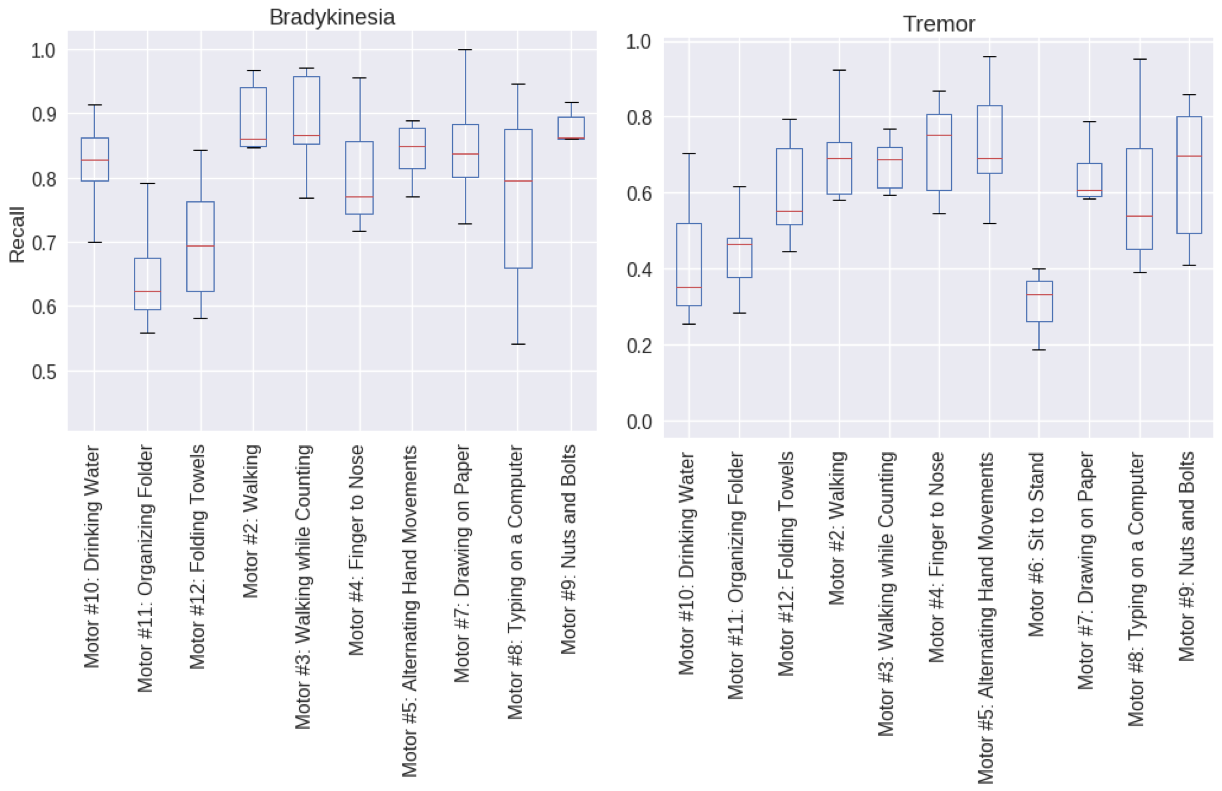Session Information
Date: Sunday, October 7, 2018
Session Title: Technology
Session Time: 1:45pm-3:15pm
Location: Hall 3FG
Objective: To develop an algorithm to characterize in-office motor symptoms of Parkinson’s disease (PD) using multiple wireless sensors, and to compare symptom recognition in activities of daily living (ADLs) vs. standard clinical assessments.
Background: Objective assessment of PD motor disability could greatly impact design of PD clinical trials and clinical care. It still remains to be determined what is the minimal number of sensors necessary to provide accurate characterization of PD motor function, specifically motor fluctuations, while patients are engaged in routine activities of daily living (ADLs).
Methods: This study was conducted as a single center sub-study of the Michael J Fox Foundation (MJFF) funded clinician input study (CIS-PD). A subset of 14 participants (mean=61.6y; SD=10.1y) were fitted with 10 sensors [figure1], assessed with serial MDS-UPDRS and performed standardized ADL tasks including walking and fine dexterity movements. The tasks were performed first in the medications OFF state and then 5 more times every 30 minutes after taking medications (ON state). All exams were videotaped. An additional, single assessment was performed 2 weeks later. A clinician rated the severity of tremor, bradykinesia and dyskinesia of the upper-extremities on a scale from 0-4. We trained a convolutional neural network model to detect whether tremor or bradykinesia were present (score > 0) in 5-second recordings of the raw sensor data. A leave-one-visit-out cross validation was performed to assess the accuracy of the model at predicting symptoms at different time points.
Results: This report is limited to the analysis of the upper extremities sensors. Area under the curve (AUC) of the model, averaged across tasks and time, was 0.81 (SD=0.047) for bradykinesia detection, and 0.87 (SD=0.041) for tremor. Bradykinesia detection was higher during walking and assembling nuts and bolts (median recall=0.87); recall of tremor was comparable between walking and finger to nose tasks (0.69, p=0.48)[figure2].
Conclusions: Flexible sensors are a non-invasive method to continuously record movement data in PD. Deep networks can successfully detect PD symptoms from such data. The analysis of the full dataset and minimal number of sensors to optimize model accuracy is underway. All raw data from this study will be made publicly available by MJFF.
To cite this abstract in AMA style:
L. Lonini, A. Dai, C. Poon, N. Shawen, L. Shimanovich, T. Simuni, D. Daeschler, J. Rogers, A. Jayaraman. Assessment of Motor Symptoms in Parkinson’s disease using Flexible Wearable Sensors and Deep Neural Networks: A CIS-PD substudy [abstract]. Mov Disord. 2018; 33 (suppl 2). https://www.mdsabstracts.org/abstract/assessment-of-motor-symptoms-in-parkinsons-disease-using-flexible-wearable-sensors-and-deep-neural-networks-a-cis-pd-substudy/. Accessed March 31, 2025.« Back to 2018 International Congress
MDS Abstracts - https://www.mdsabstracts.org/abstract/assessment-of-motor-symptoms-in-parkinsons-disease-using-flexible-wearable-sensors-and-deep-neural-networks-a-cis-pd-substudy/


